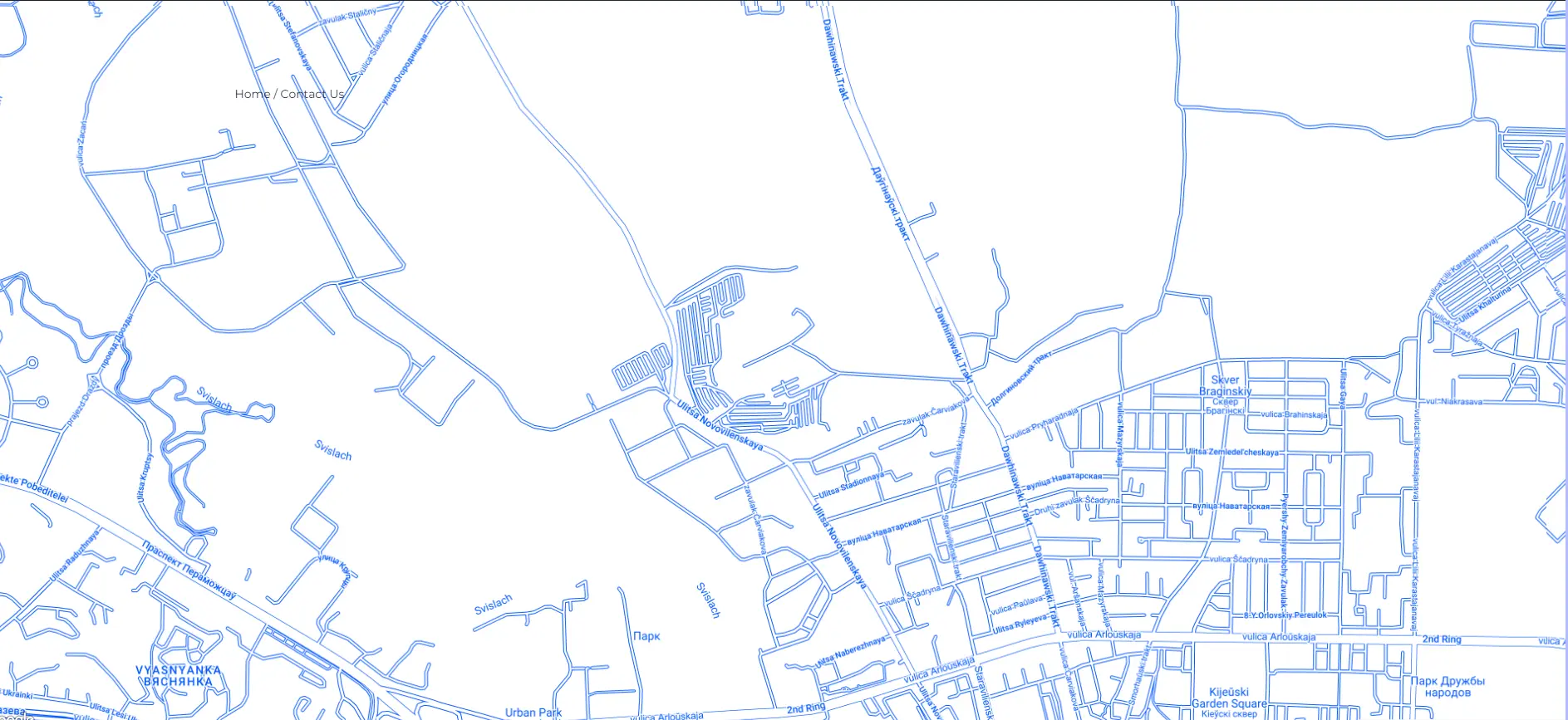In today’s competitive market, it takes more than just a quality product or service to succeed; recognition and differentiation are equally essential. A trademark serves as a powerful tool to help companies establish their identity, stand out from competitors, and protect their brand from unauthorized use. A unique name, logo, or other identifier can become not only a symbol of the business but also a valuable asset.
In the Republic of Belarus, interest in trademark registration is growing every year. More and more entrepreneurs are realizing that brand protection is not a luxury, but a necessary step toward long-term success. In this article, we explain what a trademark is, the different types of trademarks, how the registration process works, and why professional support is essential.
What Is a Trademark?
A trademark is a designation that distinguishes the goods or services of one producer from those of others in the market. It serves as a business’s “calling card,” fostering recognition, evoking associations with a certain level of quality, and helping consumers make informed choices.
Once registered, a trademark receives legal protection. Only the trademark owner has the right to use it commercially and to prohibit others from doing so without permission.
Trademark vs. Business Name, Brand, and Corporate Identity
The term “trademark” is often confused with other business identifiers:
- Business name – The official name of a legal entity under which it is registered. It appears in charters, contracts, registration, and financial documents.
- Brand – A broader concept that includes the trademark, company reputation, consumer perception, values, and other intangible assets.
- Corporate identity – A collection of visual and verbal elements a company uses, such as its logo, corporate colors, fonts, packaging, etc.
Unlike the concepts listed above, a trademark must be registered with the government and grants the owner exclusive legal rights.
Forms of Trademark Expression
A trademark can take various forms, but the key requirement is that it must be distinctive and capable of being reproduced. In practice, the following types of trademarks are commonly used:
- Word marks – Words, phrases, letters, numbers (e.g., brand names or acronyms).
- Figurative marks – Graphic images, symbols, or drawings.
- Combined marks – A mix of verbal and graphic elements.
- Three-dimensional marks – Shapes of goods or packaging that have become associated with a particular producer.
- Other forms – In some cases, sound or color marks are permitted, provided they can be accurately reproduced.
The form chosen depends on the registration goals and market strategy. Regardless of type, a trademark must be unique and not misleading to consumers.
Who Can Register a Trademark?
The right to register a trademark belongs to those who are using or planning to use the designation in business activities. In Belarus, this right is granted to both organizations and individuals, subject to certain conditions.
Legal Entities and Individuals
Any legal entity, whether a commercial organization (such as a limited liability company or joint-stock company) or a non-commercial one offering goods or services, can register a trademark.
Individuals can also apply for trademark registration, provided they act as sole proprietors or through an authorized representative. The applicant must be engaged in business activities related to the designation they intend to register.
Registering a trademark gives the owner exclusive rights to use the mark, which is particularly important in a competitive environment and for the growth of small and medium-sized enterprises.
Specifics for Sole Proprietors
Sole proprietors have the same rights to trademark registration as legal entities, but there are a few specifics:
- Identification of the owner – The application and registration certificate will include the proprietor’s full name and their status as a sole proprietor.
- Use of the mark – The trademark must be used in connection with the business activities listed in the proprietor’s registration and must correspond to the goods and services claimed.
- Transfer and licensing – A sole proprietor can transfer rights to a trademark or license its use to others, creating opportunities for monetization.
Trademark registration for sole proprietors enhances customer and partner trust and serves as a protective tool against imitation and unfair competition.
Which Designations Cannot Be Registered as Trademarks
Not every designation can be registered as a trademark. There are specific legal restrictions designed to protect consumers, market participants, and public interests. When applying for trademark registration, it is important to consider these limitations to avoid rejection.
General Restrictions
Trademark registration is not permitted if the designation:
- Lacks distinctiveness — meaning it does not enable consumers to distinguish the goods or services of one entity from those of another. This typically applies to overly generic or standard terms.
- Describes the type, quality, quantity, intended purpose, value, place of origin, or method of production of the goods. Such designations are considered common and cannot be monopolized by a single applicant.
- Misleads consumers regarding the nature of the goods or their manufacturer — for example, indicating qualities the product does not possess or a false place of origin.
- Contains false information or contradicts public interest, principles of humanity, or morality.
- Imitates official symbols such as flags, coats of arms, emblems, or names of governmental or international organizations (unless authorized).
- Is identical or confusingly similar to a previously registered trademark for similar goods or services.
Examples of Grounds for Refusal
Here are a few common examples of trademark registration refusals:
- Attempting to register the word “milk” as a trademark for dairy products. The term merely describes the product and lacks distinctiveness.
- Registering a mark containing the word “elite” for inexpensive household appliances. This could mislead consumers about the product’s quality.
- Using the Red Cross emblem or a similar symbol — such signs are protected regardless of who uses them.
- Filing a logo similar to one already registered for comparable goods. Even minor differences may not be enough if the marks create a similar overall impression.
Before filing an application, it is advisable to conduct a preliminary check of the chosen designation. This can help avoid unnecessary costs, delays, and rejection. Our experienced legal team can assist in this verification process.
Legal Opinion in Belarus
Obtain a legal opinion in Belarus considering international standards and local regulations!
Trademark Registration Procedure in the Republic of Belarus
Trademark registration is a formal process that grants the exclusive right to use the selected designation. It consists of several stages and requires careful preparation of documentation and attention throughout the filing process.
Step 1: Filing the Application
The process begins with submitting an application to the national intellectual property authority—the National Center of Intellectual Property (NCIP). Applications may be submitted in person, through a representative, or remotely.
The application must include:
- A request for registration
- An image or description of the mark
- A list of goods and/or services covered by the trademark (according to the Nice Classification)
- Information about the applicant
- Proof of payment of the official fee
It is crucial to properly define the list of goods and services, as trademark protection will apply only within the scope of the items specified in the application.
Step 2: Examination
Once submitted, the application undergoes a formal examination to verify completeness and compliance with procedural requirements. If everything is in order, the application proceeds to the next stage.
A substantive examination follows. At this stage, the authority assesses whether the designation is distinctive, if there are any grounds for refusal, and whether it infringes on third-party rights (such as similarity to existing trademarks).
If any issues are found, the applicant will receive a notification. The applicant may then respond with arguments, make amendments, or withdraw the application.
Step 3: Decision and Issuance of the Certificate
If no objections arise during the examination, the NCIP will issue a positive decision on registration. After payment of the final fee, the applicant receives a certificate of trademark registration, confirming the exclusive right to use the mark and to protect it from unauthorized use.
Validity Period of Registration
The certificate is valid for 10 years and can be renewed indefinitely for additional 10-year periods. To maintain protection, renewal applications and payment of the corresponding fee must be submitted in a timely manner.
If you lack experience dealing with the NCIP or wish to minimize the risk of rejection, our legal experts are ready to help you prepare the required documents, guide you through the process, and represent your interests before the authorities.
Trademark Registration Fees
The official fee for filing a trademark application and undergoing preliminary examination is 8.5 base units (357 Belarusian rubles when submitted through the online portal with a 15% discount). Additionally, you must pay 4.25 base units (178.5 rubles) for each additional class of goods and services under the Nice Classification (NCL), starting from the second class.
If the application is submitted not through the online portal, the fee for registering a trademark in one NCL class starts from 10 base units, which is approximately 420 Belarusian rubles. Upon the applicant’s request, an additional examination of the mark can be conducted, with a cost of 28 base units (approximately 1,176 rubles).
To have the trademark entered into the State Register of the Republic of Belarus, a separate fee of 19 base units (798 rubles) must be paid.
If the trademark is to be protected outside Belarus, for example, via international registration fees start from 600 Swiss francs for no more than three NCL classes.
Trademark Owner Rights
Registering a trademark grants its owner not only legal protection but also a set of concrete rights that can be used for commercial benefit and to protect business interests against unfair competition.
Exclusive Right to Use
The primary right of the trademark owner is the exclusive right to use the mark in relation to the goods and/or services specified in the certificate. This means only the rights holder is entitled to place the trademark:
- Оn packaging and labels;
- In advertising materials;
- On websites and in domain names;
- In business documentation;
- When providing services.
No one is allowed to use the registered trademark without the owner’s permission even with minor modifications if they result in a similar visual or phonetic impression.
Right to Transfer and License
Trademark rights may be used not only personally but also transferred to others:
- Full transfer of rights is possible through an assignment agreement. Once concluded, the new party becomes the full legal owner.
- Licensing (entering into a license agreement) allows another party (e.g., a partner, distributor, or franchisee) to use the trademark under certain terms and conditions.
Such agreements must be registered with the National Center of Intellectual Property, ensuring transparency and legal enforceability of the relationship.
Protection Against Infringement and Liability for Unauthorized Use
If someone uses a registered trademark without the owner’s consent, it constitutes an infringement of exclusive rights. This can include counterfeit goods, imitation of packaging, or unauthorized use of the logo on websites or in ads.
In such cases, the trademark owner has the right to demand:
- Cessation of unlawful use of the trademark;
- Removal or destruction of counterfeit products;
- Compensation for damages or payment of royalties;
- Liability of the infringer under administrative or civil law.
In cases of repeated or severe violations, the owner may file a lawsuit to defend their rights.
To avoid losing rights, it is crucial to monitor potential infringements and respond appropriately. Our attorneys are ready to represent your interests, draft a claim, license agreement, or assignment contract, and, if needed, handle court proceedings or official disputes.
Why Registering a Trademark Matters
In today’s increasingly competitive business environment, trademark registration is more than a formality; it’s a strategic decision. It helps protect your brand, build consumer trust, and establish a strong legal foundation for business development in both local and international markets.
Protecting Reputation and Customer Base
A trademark means brand recognition, trust, and customer loyalty. If the mark is not registered, any third party may use it freely, posing risks to your client base and reputation.
Registration gives the owner the power to:
- Prevent attempts to copy or misuse the trademark;
- Protect their business reputation in case of poor-quality counterfeit goods being sold under their name;
- Ensure consistency of branding and market positioning.
Thus, a registered trademark becomes a reliable asset in the battle for market share.
Increasing the Market Value of a Business
Having a protected trademark positively impacts a company’s investment appeal. It is a valuable intangible asset that can be used in the following ways:
- Included in the valuation of the business;
- Used as collateral;
- Incorporated into a franchise package.
For startups and small businesses, a trademark often becomes one of the key assets that highlights the uniqueness of the project and signals serious market intent.
Opportunity for International Protection
If a company plans to enter foreign markets, its trademark can be registered in other countries. Based on national registration, it is possible to apply for international protection through the Madrid Agreement and its Protocol.
International registration provides access to protection in dozens of countries and allows companies to:
- Develop export strategies;
- Protect their brand abroad from competitors;
- Enter into international licensing and cooperation agreements.
A registered trademark is not just a formality; it is a practical tool for strengthening and scaling your business. To ensure full legal protection, avoid application errors, and receive ongoing legal support, contact our specialists. We are ready to assist with document preparation and represent your interests before the authorities.
Conclusion
A trademark is not merely a part of corporate branding; it’s a legally protected asset that plays a key role in business development. Registering it secures the exclusive rights to a unique identifier, protects your company’s reputation, enhances market recognition, and helps combat unfair competition effectively.
In the context of growing business activity in the Republic of Belarus, registering a trademark has become a necessary step for any entrepreneur seeking sustainable growth and business expansion.
Suppose you want to complete the registration process with minimal risk and full legal consideration. In that case, our attorneys are here to help, from preparing the documents to handling the application and representing you before government authorities. We ensure reliable legal support at every stage.
Contact us
If you have any questions related to trademark registration in Belarus, we will be happy to help! Our long-term experience will help you choose a lawyer to represent your interests.
- +37529142-27-19 (WhatsApp, Viber, Telegram);
- info@ambylegal.by.






